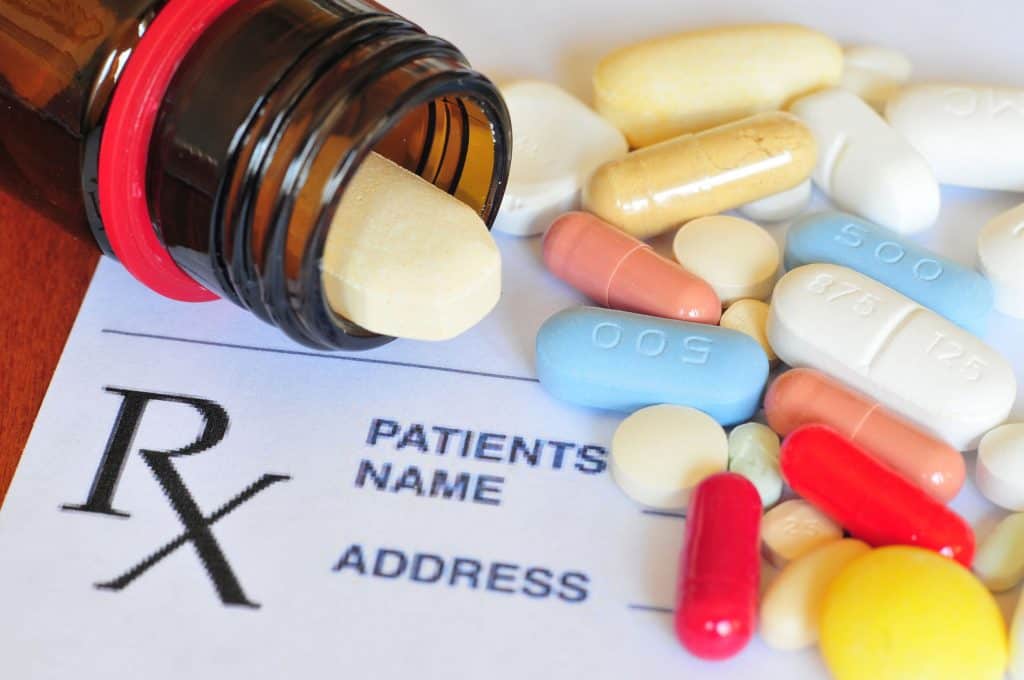How To Transfer a Prescription To Another Pharmacy, the Easy Way
Posted by Prescription Hope - See Editorial Guidelines (Last Updated On: Wed May 03 2023)
Transferring a prescription to another pharmacy sounds like a major hassle. But thankfully with the development of information and technology, transferring a prescription to another pharmacy is a simple process for the most part.
However, because of the perceived complications, people understandably ask how to transfer a prescription to another pharmacy
This article will give a clear understanding of how to transfer a prescription to another pharmacy, how long it will take, exceptions on transferring, and much more. Here’s the quick answer to get you started.
How to transfer a prescription to another pharmacy? Transferring a prescription involves four simple steps:
- Contact your new pharmacy, verify details, procedures and provide information
- Provide your details along with your insurance information
- Provide your medical history
- Allow them time for processing (average 1-3 days)

How to Transfer a Prescription to Another Pharmacy

First things first, before choosing a pharmacy to transfer, be sure to research well on the ins and outs of the pharmacy.
This includes price comparisons, availability of medications, proximity, and other accompanying services they can provide in times of emergencies. It’s also worth checking if the pharmacy has a good record of filling prescriptions, dispensing medications, handling customers, and complaints.
This includes checking reviews alongside other neighborhood pharmacies, their quality of services, and of course, star ratings and performance metrics.
Doing this research before choosing a pharmacy to transfer to is important to make your whole transfer process worth it.
Transferring a prescription to a new pharmacy takes only four simple. Let’s get into each of those a bit deeper.
1. Get in touch with your new pharmacy
At this point, you can verify details, procedures and provide some top-level information about your needs and circumstances.
Also, make sure your insurance plan covers the pharmacy you’ve chosen for transfer. If it doesn’t, you can’t transfer your insurance plan to a different pharmacy.
After choosing wisely, the first thing you need to do is get in touch with the pharmacy you’re planning to get a transfer for. In addition, verify the information about the pharmacy you know about to double-check existing knowledge.
Doing this can also highlight any changes that the pharmacy has made in terms of their policies, which you may not be aware of.
For example, if you’ve chosen the specific pharmacy transfer for cheaper prices, but if the pharmacy has just recently increased its pricing, then the transfer may not benefit you.
After this verification, let the new pharmacy know you’re looking for a transfer and need to understand the procedures.
Remember that different pharmacies may have different procedures for a transfer, so the information you need to provide may vary.
Many pharmacies require your name, prescription details, such as drug name, strength, and prescription number, and details of your old pharmacy.
You can provide these details by calling, visiting in person, or through the pharmacy’s website if they offer the transfer service on a website or mobile app.
2. Provide Your Details Along with Your Insurance Information
The new pharmacy will require some of your details, such as your first and last name, date of birth, address, phone number, or other contact details.
Along with this, you will also have to provide information regarding your insurance plan. If your pharmacy offers online resources, you can share this information through the website under online transfer procedures.
3. Provide Your Medical History
Many of us tend to be cautious about sharing our medical history with pharmacies.
And when transferring a prescription to another pharmacy, we’ll tend to share only the details of the current prescriptions we want to transfer. This may not be the best approach.
Often your new pharmacy will ask you questions regarding any allergies. This could be a good time to provide details of all your relevant medical history.
In general, a pharmacy maintains records of your medical history to ensure the prescription they’re filling for you is safe and healthy for your circumstances. This is to prevent patients from having allergic reactions or combing drugs that could interact with each other.
What happens when you transfer a prescription to a new pharmacy is that your new pharmacy will only have records of prescriptions you‘ve filled with them and not the records of prescriptions you’ve filled with other pharmacies.
So, it’s highly recommended for you to transfer all your prescriptions and medical records to the new pharmacy, rather than just one or a few.
This will prevent all potential life-threatening drug interactions you can face. This will also allow the new pharmacy to properly evaluate the safety of current and future medications they dispense to you.
4. Allow Time for Processing
Give sufficient time for your new pharmacy to process the transfer. It can take anywhere between a couple of hours to a few days.
Often the processing time for the transfer and its procedures depends on how many prescriptions you want to transfer. On average, it takes around 1-3 days for a transfer to finalize completely.
If the transfer appears to be taking too long, and you want to speed it up, you can always contact your old pharmacy and ask about progress.
Legally, the pharmacy is required to comply if you request it. Once the transfer is approved, your new pharmacy will dispense the medications in the next valid fill date.

Circumstances Where Your Transfer May Not Go Smoothly
Although the transfer process is straightforward, there are circumstances where a transfer may not be possible or would need a lengthy transfer process.
So, before you go for the option of switching, make sure you know which of your prescriptions can be transferred.
You can also get advice from your doctor on which of your prescriptions can or would go through a smooth transfer process.

So, to keep it brief, below are the three main prescriptions that can hold up a transfer process.
1. Your Prescription is Out of Refills
If your prescription is out of refills, your new pharmacy will not be able to accept the transfer.
In this scenario, your new pharmacy will need to call your doctor and request a new prescription.
Again, there can be certain restrictions on refills that your new pharmacy can’t resolve. This includes if your doctor wants you to have a follow-up appointment or when your doctor feels you don’t need the respective medications anymore.
So, make sure you coordinate these with your doctor’s practice before transferring a prescription to another pharmacy.
2. Some Prescriptions can Only be Transferred Once
Controlled medications that belong to Schedule III, IV, and V can only be transferred one time. This standard one-time transfer is highly strict no matter how many refills you have left.
After your first transfer, you’ll need a new prescription from your prescriber for being eligible for another prescription transfer to another pharmacy.
Testosterone, Tylenol with codeine, Ambien, Soma, Ultram, and Xanax are some common examples of medications that can have a one-time transfer.
3. Some Prescriptions Cannot be Transferred at all
Medications that cannot be transferred at all include those that are considered Schedule II drugs or substances. Schedule II drugs are those that have the potential for abuse and addiction.
These types of medications cannot even be refilled without having your doctor write a whole new prescription. Your prescriber or doctor will have to give you a new prescription every time you want to fill them.
These include drugs such as Vicodin (hydrocodone/acetaminophen), Adderall (amphetamine salt combo), Percocet (oxycodone/acetaminophen), Concerta (methylphenidate ER), and Oxycontin (oxycodone ER) are just some examples of medications that cannot have a prescription transfer at all.

Final Thoughts
We hope this has been useful in understanding that, while it may take some work and due diligence on your part, the ability to transfer your prescription to another pharmacy is fairly straightforward.
For more questions regarding your specific condition, always consult your healthcare provider.
If you’re having trouble affording any of the medications you’ve been prescribed, visit our home page to learn more about Prescription Hope’s medication access service, compare the costs of your current prescriptions, and see how we can help obtain your medications at a cheaper price. Fill out an application today and start receiving Brand-Name prescription medications at your doorstep. Call us at 1-877-296-HOPE (4673) to speak to one of our representatives, we’re always happy to see how we can help.
ENROLL



